Athens, the birthplace of democracy and a cradle of ancient civilisation, has always been a magnet for history buffs who seek to uncover the treasures of its remarkable past. This enigmatic city is steeped in an unparalleled historical legacy that has profoundly influenced modern-day philosophy, art, and society.
The charm of Athens lies not only in its iconic attractions but also in its ability to make its vast historical wonders accessible to every curious traveller, whether their holiday spending money reaches Croesus levels or their purses are more aligned to Penia. Anyway, with that touch of pretentiousness dispensed with, we can’t wait to explore these 10 places that reveal the true wonder of ancient Athens, and all available on a budget! Let’s dive in…
Acropolis
The Acropolis, also known as the Sacred Rock, is arguably the symbol of Greece and its culture. Standing on a massive rock, it serves as a visual reminder of the greatness of Ancient Greece, which was a center of art, philosophy, and democracy. On top of that, the Acropolis, with the Parthenon as its iconic centerpiece, is a testament to the remarkable architectural and artistic accomplishments of the ancient Greeks.
The Acropolis is open daily from 8:00 am to 8:00 pm, with tickets priced at €20 for adults and €10 for reduced rates.
B warned that this ancient wonder gets busy in peak seasons. If crowds aren’t your thing, then you can find ‘skip the line access’ online Acropolis tickets – you’ll pay a premium, but for many, it’s worth it.
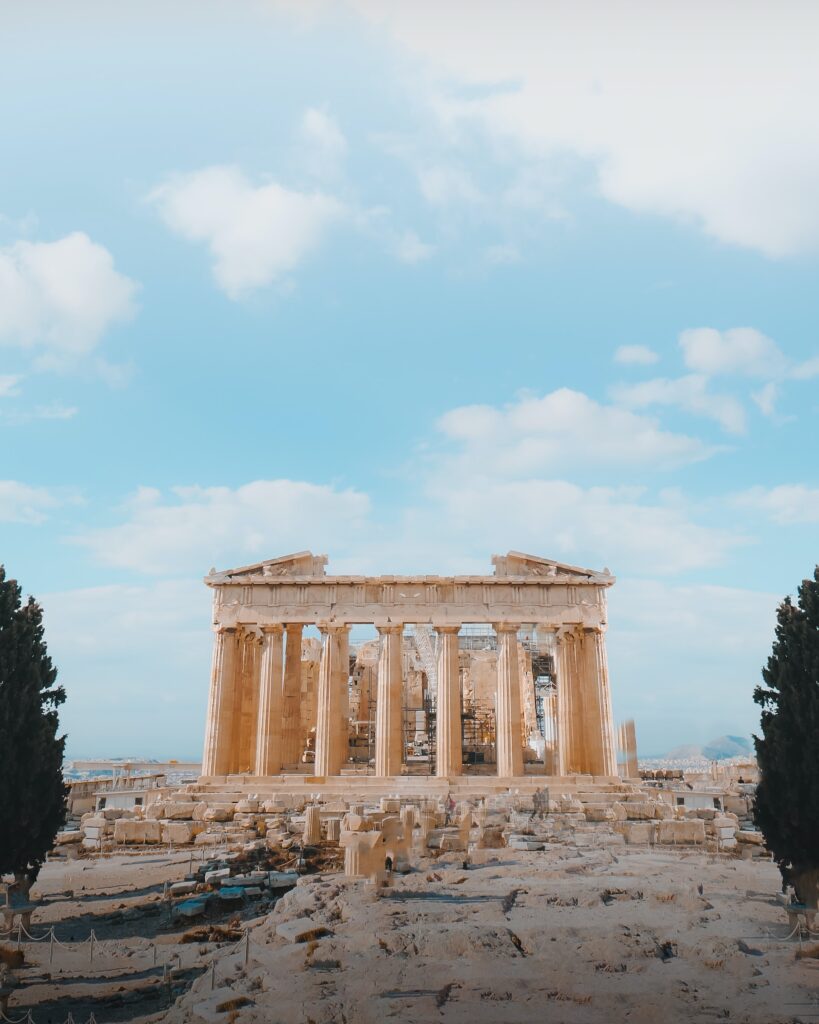
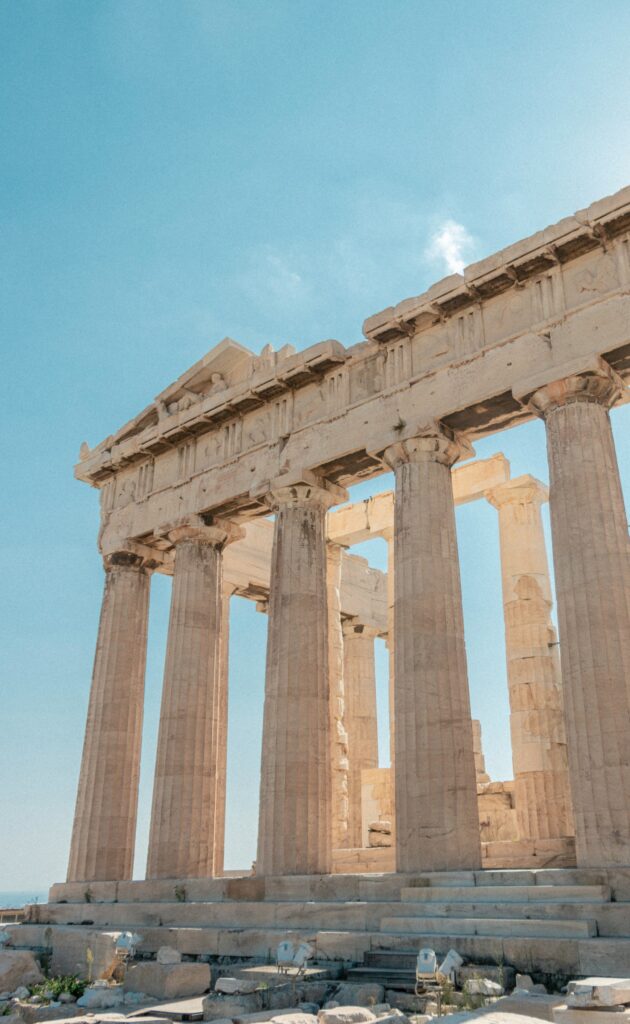
Acropolis Museum
At the Acropolis Museum, visitors have the opportunity to explore a comprehensive collection of ancient artifacts related to the Acropolis and its surrounding areas.
The museum houses an impressive array of sculptures, such as the Parthenon frieze and metopes, providing insight into the artistic mastery of the ancient Greeks. Additionally, the museum showcases various everyday items, such as pottery and tools, offering a glimpse into the lives of the Athenians during that period.
Currently open daily from 9am to 8pm, do be aware that the museum’s hours vary by season. Tickets cost €10 for adults, €5 for reduced rates, and free admission for children under 18.
Tower Of Winds
This octagonal marble clock tower, built in the 2nd century BC, is an excellent example of ancient Greek engineering. The monument is especially fascinating because of its multifaceted functionality and architectural ingenuity.
Designed by the astronomer Andronicus of Cyrrhus in the 1st century BCE, the Tower of Winds served as a timekeeper, weather vane, and water clock, combining the disciplines of astronomy, meteorology, and hydraulic engineering. The tower’s exterior is adorned with relief sculptures representing the eight winds, a testament to the artistic prowess of the ancient Greeks. As such, the Tower of Winds offers a unique window into the scientific and artistic knowledge of a highly advanced ancient society.
The site is open daily from 8:30 am to 3 pm (and 5 pm on Saturdays and Sundays), with tickets priced at €6 for adults and €3 for reduced rates.
Mount Lycabettus
Lycabettus hill is the highest point in the centre of Athens and offers a full 360 panorama of the city and surrounding areas. It was formed, according to ancient myths, when the goddess Athena accidentally dropped a massive rock while carrying it to construct the Parthenon. The rock transformed into the hill, which was once believed to be a refuge for wolves, giving it the name “hill of the wolves.”
For those on a budget, it is possible to walk all the way to the top of Mount Lycabettus. The climb takes anywhere from thirty to ninety minutes depending on how fast you go and how hot the day is. Alternatively, you can take the funicular railway called the Teleferik from Ploutarchou street which costs only €7 per person one way.
As you ascend to the highest point of the city, prepare to be mesmerised by the breathtaking views of historic sites such as the Acropolis, the Temple of Olympian Zeus, the Panathenaic Stadium, and the Ancient Agora. Upon reaching the summit, you’ll find the picturesque Greek whitewashed church of Agios Georgios (St. George). There’s also a charming café situated at the top, offering panoramic views of Athens and its stunning coastline.


Anafiotika
Nestled beneath the Acropolis, Anafiotika is a picturesque neighborhood with narrow streets and traditional white-washed houses. This charming area is free to explore and open to visitors all day. Some of the best places history buffs should check out while wandering include:
- Traditional Cycladic architecture: Anafiotika, located at the base of the Acropolis in Athens, boasts a unique collection of traditional Cycladic architecture. Wander the narrow streets and appreciate the well-preserved, white-washed homes with bright accents, reflecting the island style of Anafi.
- Byzantine churches: Explore the multiple historic Byzantine churches nestled in Anafiotika, such as St. George of the Rock (Agios Georgios tou Vrachou) and Church of Saint Simeon (Agios Simeon), showcasing splendid frescoes and religious iconography. Their architecture and artwork reveal centuries-old religious practices.
- Museum of Greek Popular Art: Discover the rich artistic traditions of Greece by visiting the Museum of Greek Popular Art, nearby Anafiotika. Exhibiting ceramics, textiles, embroidery, and folk paintings, it offers a glimpse into the country’s creative and cultural history.
- Anafiotika’s community history: Immerse yourself in the past by learning about the origin of Anafiotika’s settlers. In the mid-19th century, builders and skilled artisans from the island of Anafi migrated to Athens to work on King Otto’s palace. They built Anafiotika, creating a distinctive enclave that reflects their island roots.
- Pláka District’s archaeological sites: Further explore the historical surroundings of Anafiotika within Pláka, as the area is peppered with ancient ruins, Roman monuments, and Byzantine remains. The Roman Agora, Hadrian’s Library, and the aforementioned Tower of the Winds are all within walking distance, providing a journey through time and a lovely little bit of exercise, too.
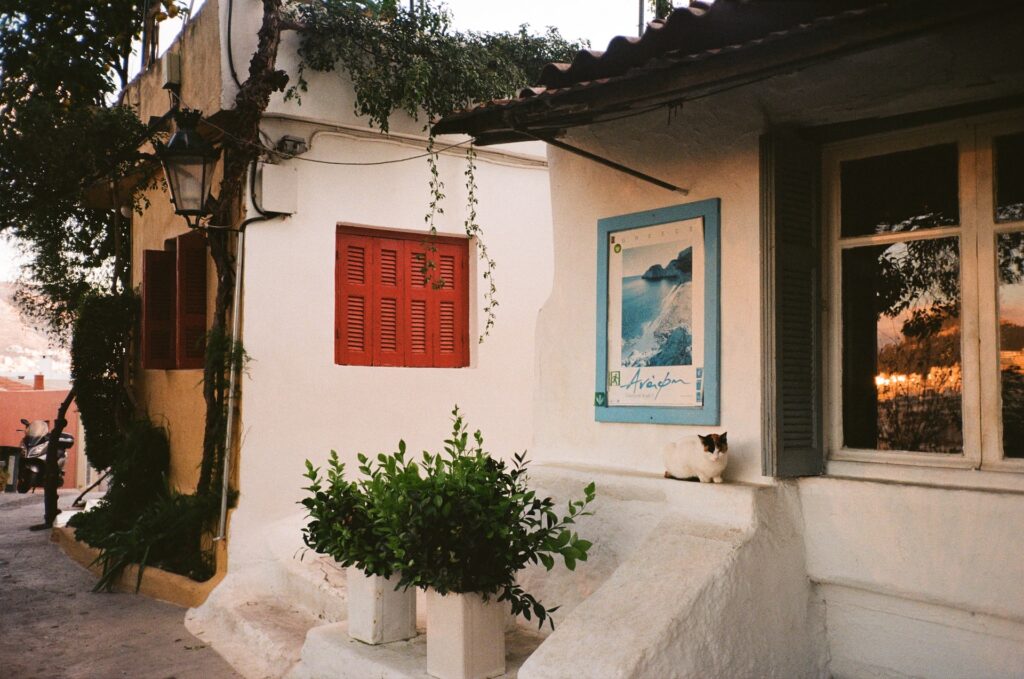

Ancient Agora Of Athens
Once the heart of ancient Athens, the Agora was a bustling marketplace and gathering spot. Today, it houses the Temple of Hephaestus and the Stoa of Attalos.
The birthplace of democracy and the political heart of ancient Athens, it was here that important political discussions, jury panels, and decisions were made by Athenian citizens in the open-air assembly known as the Ecclesia.
As the centre of the city’s social, cultural, and economic life, the Agora is a treasure trove of architectural and historical wonders. From standing on the same ground as prominent figures like Socrates, Pericles, and Themistocles, visitors can gain a deeper understanding of the foundations of democratic principles and ancient Greek society.
Significant landmarks at the Agora include the Temple of Hephaestus, one of the best-preserved examples of ancient Doric architecture. In fact, the temple remains virtually intact since its construction in the 5th century BCE. Dedicated to Hephaestus, the god of metalworking, and Athena, the goddess of crafts, the temple exemplifies classical Doric architecture and boasts decorative friezes depicting the mythological tales of Theseus and the Labors of Heracles.
Don’t miss the Stoa of Attalos, either, which houses a remarkable collection of artifacts in the Museum of the Ancient Agora. Exploring the architectural styles and remains of significant monuments allows history enthusiasts to trace the stylistic evolution across various periods, from the Classical era to the Hellenistic and Roman periods.
The site is open daily from 8:00 am to 8:00 pm, with tickets priced at €10 for adults and €5 for reduced rates.
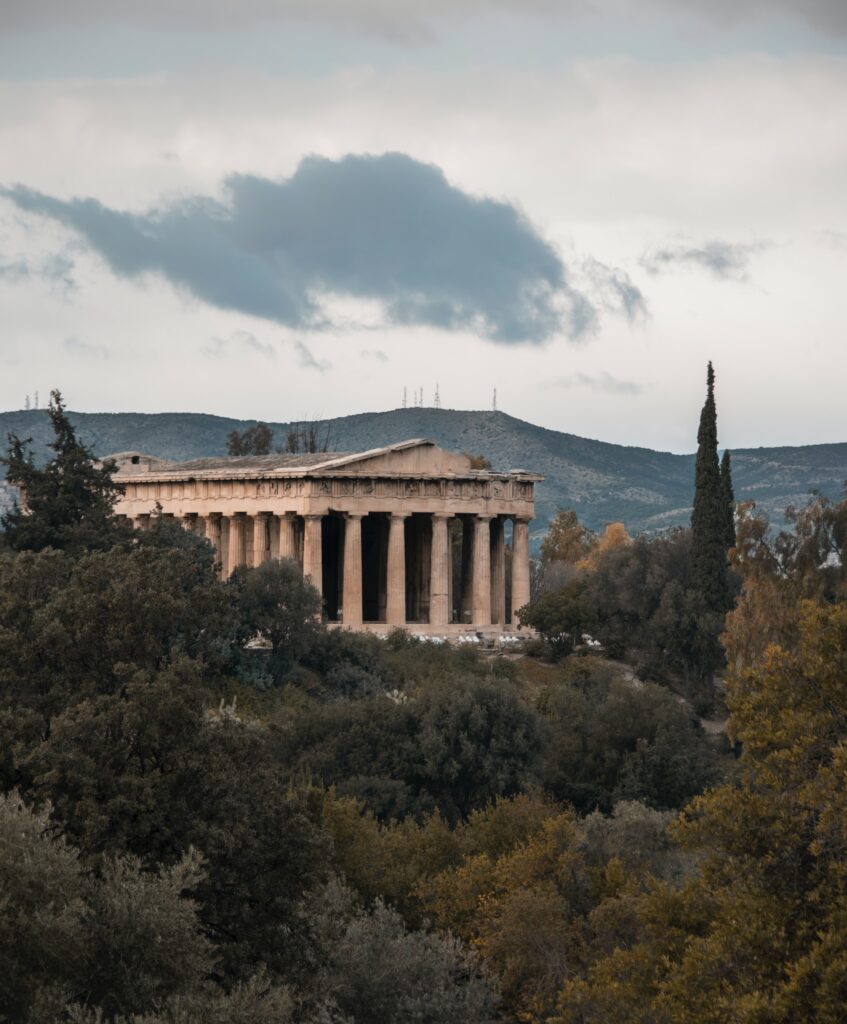

Ancient Cemetery Of Kerameikos
This archaeological site was once the largest cemetery in ancient Athens. The cemetery, dating back to the 12th century BCE, served as the final resting place for prominent Athenian citizens, including notable figures like Pericles and his family. Additionally, by exploring its impressive collection of funerary sculptures and monuments, visitors can appreciate the remarkable artistry associated with commemorating the dead, reflecting both religious and social beliefs of ancient Greek society.
Open daily from 8:30 am to 5 pm, tickets cost €8 for adults and €4 for reduced rates.
Archaeological Site Mycenae
Located outside Athens, Mycenae is an ancient city that dates back to the 2nd millennium BC. Visitors to Mycenae should check out these landmarks, at the very least:
- The Lion Gate: This iconic entrance to the archaeological site features a relief of two lionesses standing on their hind legs, serving as a symbol of the Mycenaean civilization’s power.
- The Cyclopean Walls: These massive stone walls were built during the Late Bronze Age and showcase the incredible engineering skills of the Mycenaeans. The walls are named after the mythological Cyclopes, as the size of the stones led people to believe that only these giants could have moved them.
- The Royal Tombs: The Grave Circle A and B consist of several shaft graves that contain the remains of Mycenaean royalty and high-ranking officials, along with various grave goods, including gold masks and weapons.
- The Treasury of Atreus: Also known as the Tomb of Agamemnon, this impressive beehive-shaped tomb dates back to around 1250 BC and represents the monumental tholos tomb architectural style.
The site is open daily from 8:00 am to 8:00 pm, with tickets priced at €12 for adults and €6 for reduced rates.
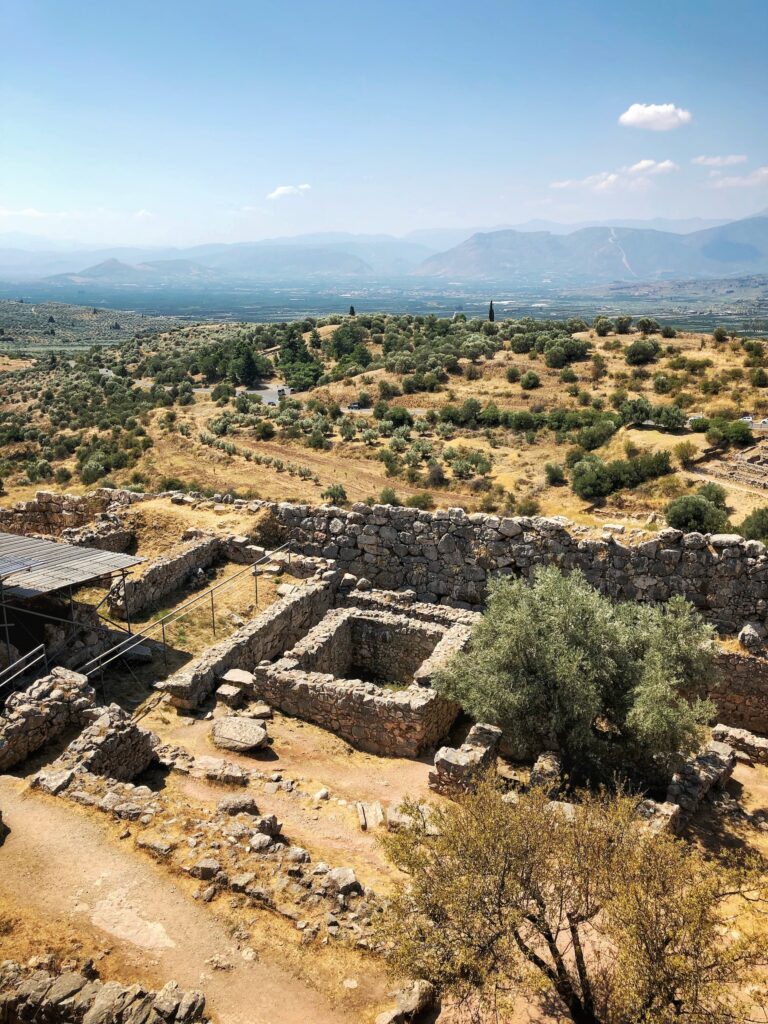
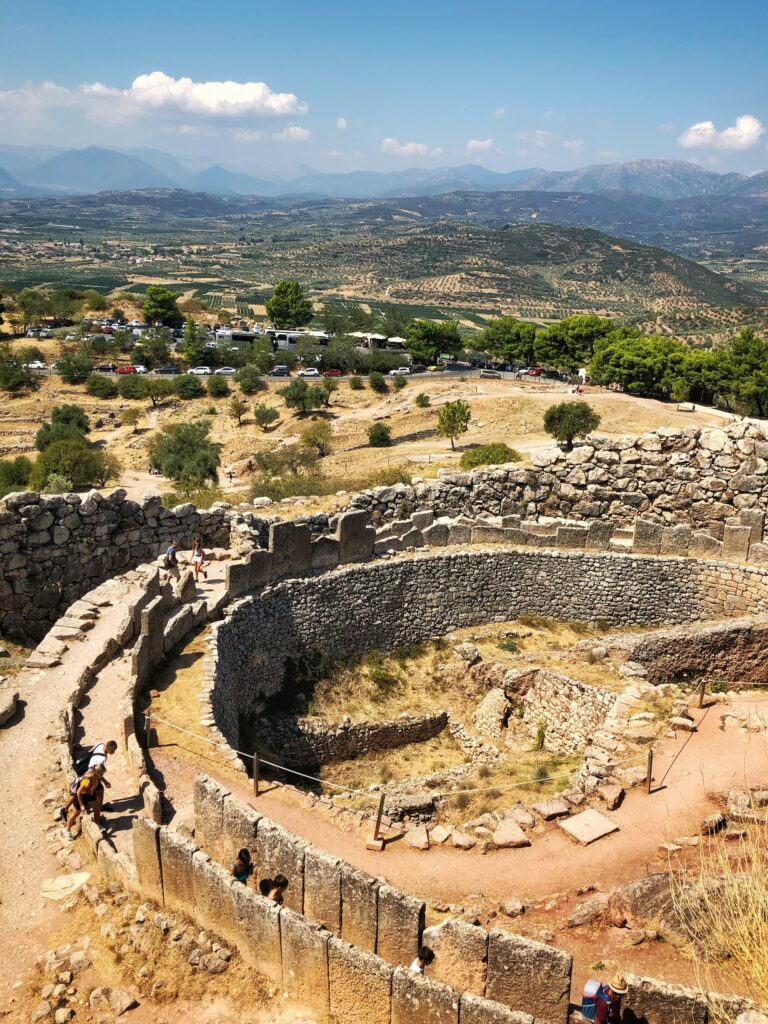
First Cemetery Of Athens
As the oldest modern cemetery in Athens, this site houses the graves of prominent Greek figures, including the poet Kostis Palamas, the novelist Alexandros Papadiamantis, and the statesman Eleftherios Venizelos.
Despite being located in the bustling city of Athens, the First Cemetery offers a peaceful and tranquil setting. Beautiful greenery, tall trees, and well-maintained pathways make the cemetery an ideal spot for quiet reflection.
The cemetery is open daily from 8:00 am to 8:00 pm and is free to visit.
Hadrian’s Library
Built by Roman Emperor Hadrian in the 2nd century AD, this library once housed numerous papyrus scrolls. Stepping into this once magnificent complex, where ancient scholars debated philosophical ideas and studied precious manuscripts, allows visitors to connect with Greece’s rich intellectual heritage and immerse in the vibrant history of the Roman Empire.
The site is open daily from 8:30 am to 3 pm, with tickets priced at €6 for adults and €3 for reduced rates.
The Bottom Line
Embark on a journey through time and explore the ancient history of Athens at these captivating sites. With their impressive architecture and fascinating stories, these landmarks offer a unique insight into the city’s glorious past and present.
After all that exploring, we’re a little hungry. If you’re feeling the same, then join us for these 6 IDEAL foodie tips for your next trip to Greece. You won’t regret it!





